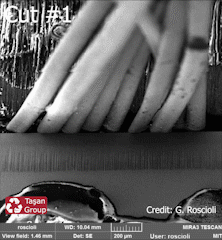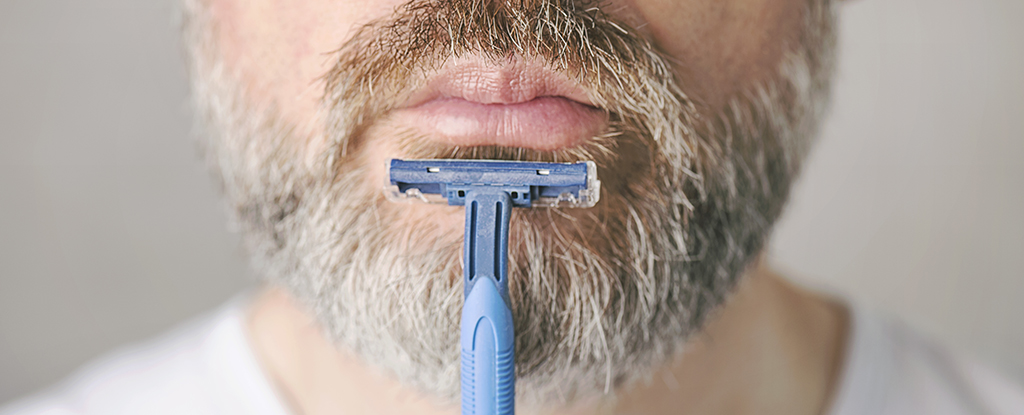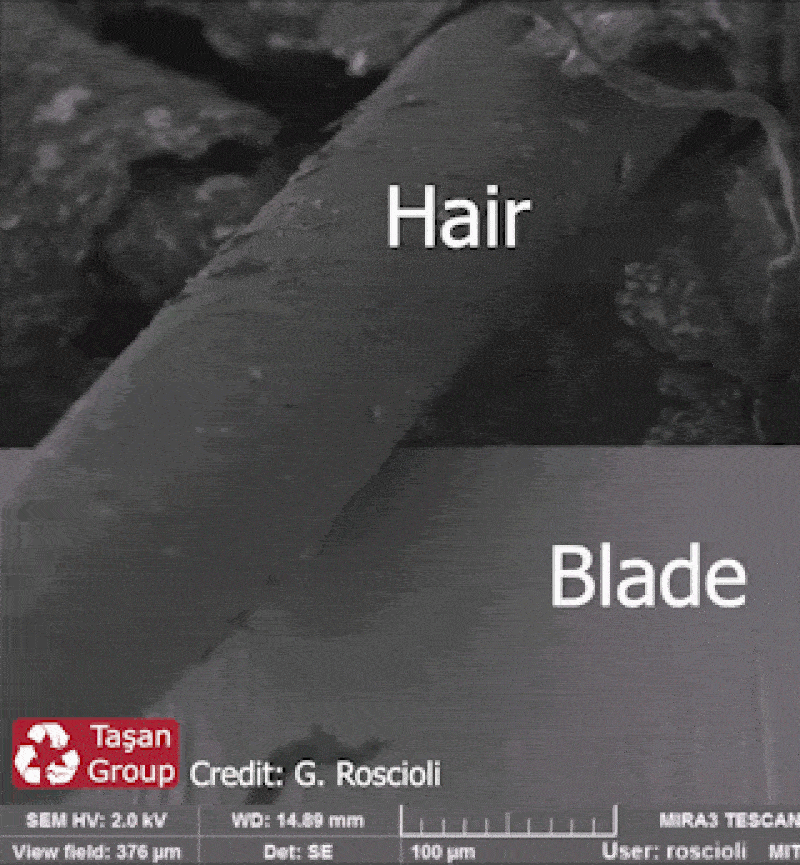You wouldn't think there's much of a contest between soft hair or a little bit of beard stubble and a sharp steel razor – and yet, most of us know razors quickly lose their sharpness no matter how carefully you shave.
Now scientists have a much better idea why this is happening at the smallest scale.
By analysing blades at a microscopic level, a new study shows that even a single strand of hair – 50 times softer than steel – can cause a blade to chip under certain conditions. Once that chip appears, the metal is susceptible to further chipping, especially if the microstructure of the steel isn't uniform.
 (G. Roscioli)
(G. Roscioli)
As well as giving us more detail on the physics behind this well-known problem, the research could also suggest ways in which blades can be better sharpened and kept sharp in the future – even the direction of a cut could make a difference.
"Our main goal was to understand a problem that more or less everyone is aware of: why blades become useless when they interact with much softer material," says metallurgist Cem Tasan, from the Massachusetts Institute of Technology (MIT).
"We found the main ingredients of failure, which enabled us to determine a new processing path to make blades that can last longer."
 (Esther Moreno Martinez/EyeEm/Getty Images)
(Esther Moreno Martinez/EyeEm/Getty Images)
Tasan and his colleagues ran a series of tests under the watchful eye of a scanning electron microscope (SEM), involving both normal facial shaving and lab experiments where the angles and cutting depths could be carefully controlled.
While very little wear was noticeable at the edges of the razors, the high-resolution imagery showed chips forming along certain parts of the razors. This happened irrespective of the thickness of the hairs being cut.
"This created another mystery: we saw chipping, but didn't see chipping everywhere, only in certain locations," says Tasan.
"And we wanted to understand, under what conditions does this chipping take place, and what are the ingredients of failure?"
Close analysis of the SEM pictures showed that chips didn't occur when the hair was fully perpendicular to the blade: it was the act of the hair bending that made chipping more likely, with damage usually in the places where the blade edge was met the sides of the hair strands.
 Images from the scanning electron microscope. (Gianluca Roscioli)
Images from the scanning electron microscope. (Gianluca Roscioli)
Computer simulations run by the researchers identified three likely points of weakness: when the blades meet the hair strands at an angle, when the blade isn't uniform in its steel composition, and when the hair strands hit the blade at a point of structural weakness in that non-uniformity.
The term stress intensification is used in material science when damage is worsened by the presence of microcracks in the material, and that seems to be what's happening here: the hair is causing these microcracks to grow into chips, dulling the blades.
Using these findings, the researchers think that steel could be better manufactured to be more resistant to these microcracks and the chips that grow from them. If that happens, then our razors could last a lot longer against the soft hair on our bodies.
"We are metallurgists and want to learn what governs the deformation of metals, so that we can make better metals," says Tasan.
"In this case, it was intriguing that, if you cut something very soft, like human hair, with something very hard, like steel, the hard material would fail."
The research has been published in Science.
"soft" - Google News
August 08, 2020 at 04:50PM
https://ift.tt/33ISfqH
Here's How Your Soft Hair Continues to Ruin Even The Sharpest Steel Razors - ScienceAlert
"soft" - Google News
https://ift.tt/2QZtiPM
https://ift.tt/2KTtFc8
Bagikan Berita Ini














0 Response to "Here's How Your Soft Hair Continues to Ruin Even The Sharpest Steel Razors - ScienceAlert"
Post a Comment